Townsend Courtney M.Jr., Evers B. Mark. Atlas of General Surgical Techniques: Expert Consult
Подождите немного. Документ загружается.

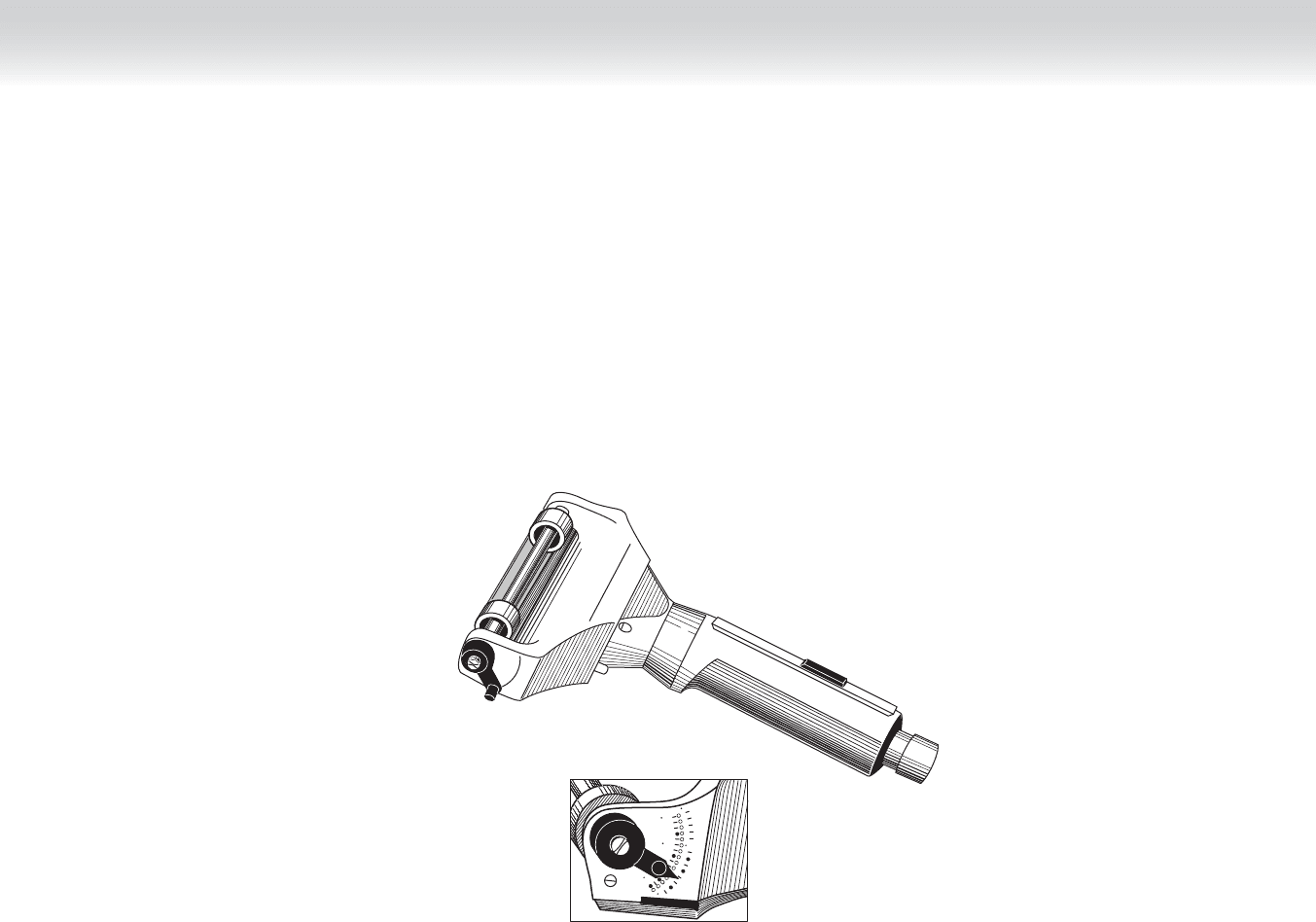
CHAPTER 103 • Skin Graft—Split Thickness and Full Thickness 1145
be mindful of normally exposed areas in conventional dress patterns. Full-thickness grafts
require either the donor site to be closed or that a split-thickness graft be placed for heal-
ing. Depth greater than 15 to 20 thousandths of an inch with the dermatome may near full
thickness and require the donor site to be autografted. It is common to harvest small
amounts of skin to cover areas of the palm or the eyelids. These small full-thickness donor
sites are usually closed primarily.
32
75
50
Dermatome
Calibration
20
0
0
FIGURE 103–2

1146 Section XV • Miscellaneous Procedures
STEP 2: PREOPERATIVE CONSIDERATIONS
◆ Burn and skin defect closure operations are elective or semielective operations.
◆ Preoperative antibiotics are chosen to cover gram-positive organisms in smaller burns.
Patients with larger burns, residents of the intensive care unit, or patients with other history
of contamination should have broader antibiotic coverage to include gram-negative organ-
isms, as well as institutional-specifi c coverage of resistant organisms.
◆ Most of the preoperative dressings used provide some topical antimicrobial. Blood loss of
0.5 to 1.0 mL/cm
2
area (depending on the timing of surgery) that is prepared can guide the
surgeon as to the need for perioperative blood transfusion.
ANESTHESIA
◆ Burn and wound surgery is performed with the patient under a combination of local anes-
thesia, conscious sedation, and general anesthesia depending on the extent of the area
involved.
◆ Efforts at minimizing blood loss during surgery may involve tourniquets in extremity burns;
topical epinephrine; topical thrombin; and possibly, tumescence of the tissue with balanced
salt solution, with or without epinephrine.
◆ The need for large access will best be judged by the area to be treated. Clear communica-
tion with the anesthesia care team is critical, because blood loss is mainly into the laparot-
omy pads and can easily be underestimated.
◆ Volume replacement during surgery in patients with burns over more than 40% of the body
is largely with blood and fresh frozen plasma. Maintenance of temperature is critical; this
can be accomplished by warming the operating room and fl uids and using blankets and
radiant heaters.
POSITION
◆ The patient’s position on the operating table is determined by the area to be treated and the
choice of donor site. We routinely use a specially designed operating room for larger burns,
which allows for an on-table bath and hanging of an extremity to facilitate circumferential
work.
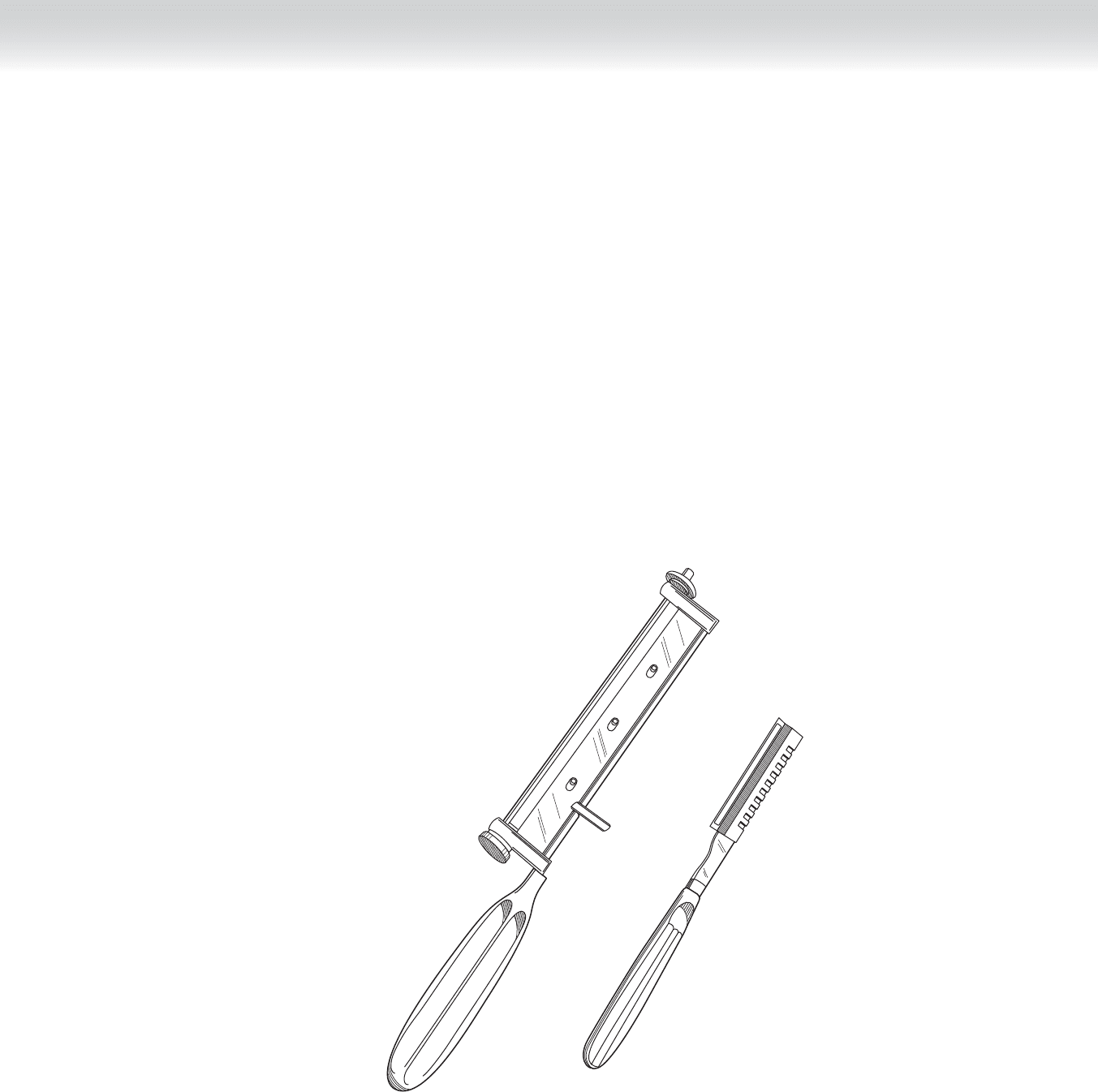
CHAPTER 103 • Skin Graft—Split Thickness and Full Thickness 1147
STEP 3: OPERATIVE STEPS
◆ Begin by preparing the wound bed. This will allow a clear estimation of the size of the
defect and will allow for hemostasis to occur while the surgeon’s attention is directed at
the harvesting of autograft.
◆ For adequate wound bed preparation, the surgeon must remove the eschar down to healthy
tissue to ensure a bed that will accept the skin. There are many choices to accomplish this
goal. Most commonly, tangential excision is chosen. Tangential excision is achieved by seri-
ally cutting through the eschar until viable dermis or other viable tissue is reached. Special-
ized knives have been invented for this purpose (Figure 103-3).
Watson knife
Goulian knife
FIGURE 103–3
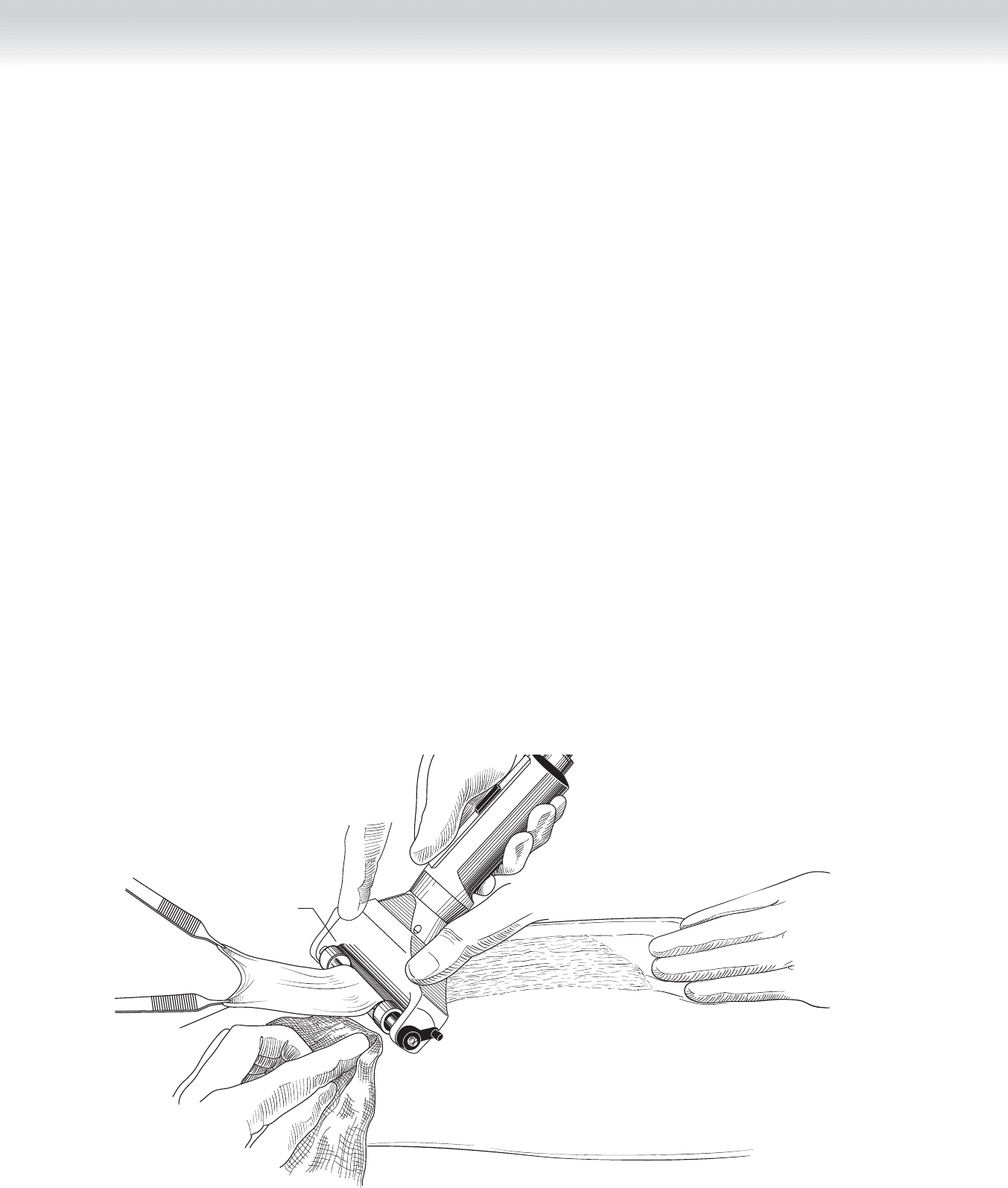
1148 Section XV • Miscellaneous Procedures
◆ Living dermis is characterized by punctate bleeding points and the pearly white appearance
of the healthy dermis. Tangential excision is the ideal for a partial-thickness burn of small
to moderate size. With larger and deeper burns, the surgeon may choose fascial excision.
Often, Bovie electrocautery is used to excise the eschar with its underlying fat. Although
underlying fat is often viable, it is removed down to fascia because of its susceptibility to
infection from a poor blood supply. Fascial excision in the care of the most extensive burns
is often necessary for survival. Once excision is complete, lap pads wet with saline and epi-
nephrine are placed over the wound. Point areas of bleeding are controlled with the Bovie.
On an extremity, an elastic bandage wrap can be used to aid in hemostasis.
◆ The donor site is then prepared, often with oil to aid in the smooth movement of the der-
matome over the skin. If a bony prominence or other irregularity is noted, it can prevent
the smooth movement of the dermatome.
◆ A balanced salt solution with epinephrine can be infused via a spinal needle to swell the tis-
sue. This allows easier passage of the dermatome to harvest a wider, more uniform, and bet-
ter quality skin graft. This is a routine practice when harvesting the head as a donor. The
dermatome is held steady at a 45-degree angle with some pressure on the skin. Traction and
countertraction is very helpful in achieving the best result. It also can be helpful to with-
draw the skin out of the dermatome as it is being harvested. This can allow evaluation and
adjustment of the depth of skin depending on the need (Figure 103-4).
Dermatome
FIGURE 103–4
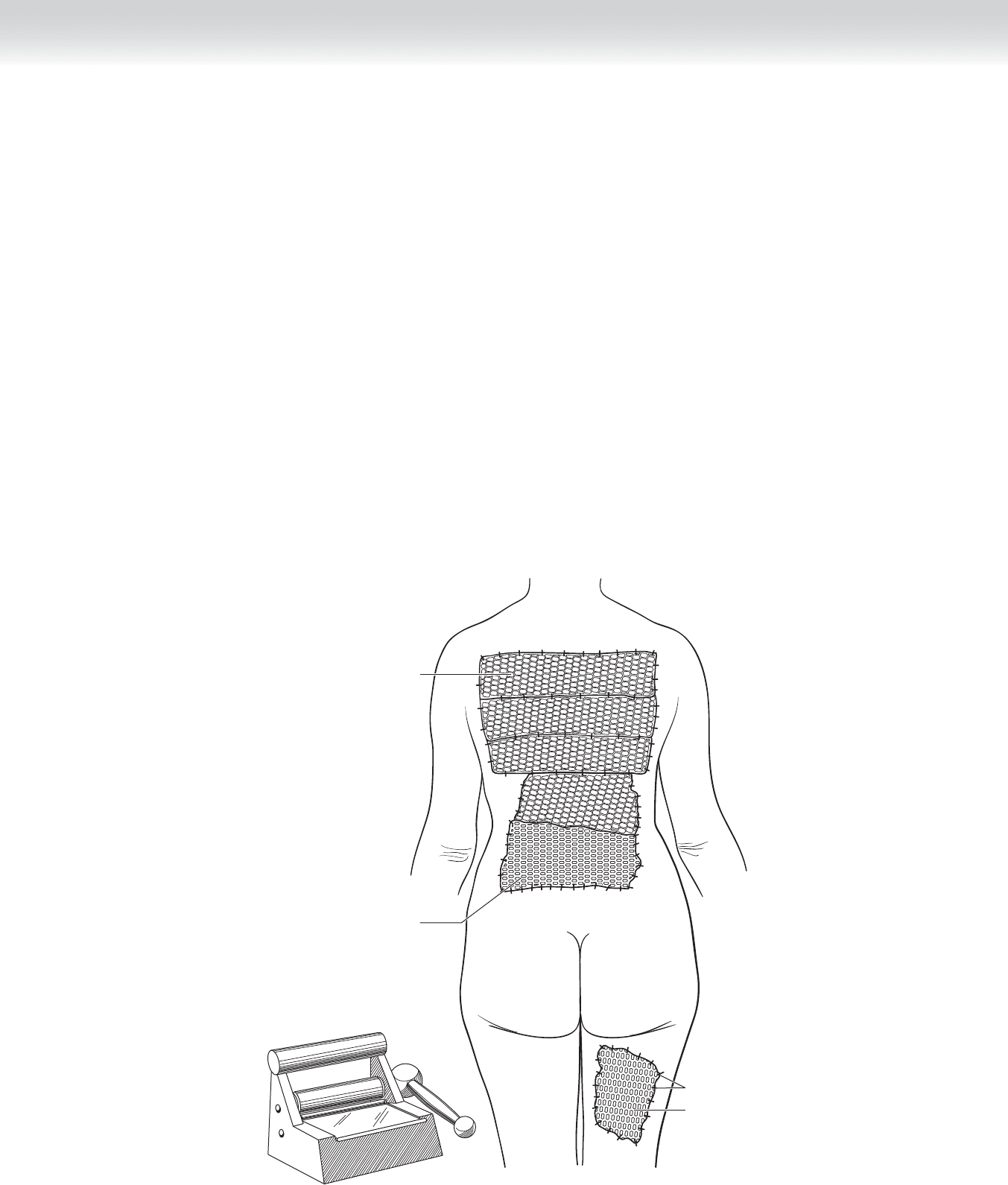
CHAPTER 103 • Skin Graft—Split Thickness and Full Thickness 1149
◆ The donor site is covered with a dressing. The choice of donor site dressing is based on
experience and available options. There are clearly many choices and no clear standard.
◆ The skin is then left as a sheet, or meshed to increase its size and to allow drainage, depend-
ing on the surgeon’s choice and the clinical situation. A variety of meshers are available.
◆ Figure 103-5 demonstrates a carrierless mesher.
◆ If a wide area is to be covered, 4:1 meshed autograft may be used. This will require an over-
lay of 2:1 homograft, which will be lost as the autograft underneath heals (see Figure 103-5).
◆ If 2:1 autograft is used, it is placed in the prepared bed, trimmed to fi t, and secured with
staples or sutures (see Figure 103-5).
◆ Whenever possible, sheet autograft should be consistent to improve the cosmetic result.
Completed 4:1 autograft
with 2:1 homograft overlay
2:1 meshed autograft
Mesher
4:1 meshed autograft
Staples
FIGURE 103–5

1150 Section XV • Miscellaneous Procedures
◆ The goal of the dressing chosen is to provide a humid environment with elimination of
shear forces for 3 to 5 days. During this period, the graft adheres to the bed underneath.
Our routine dressing after skin grafting is as follows: fi ne mesh gauze impregnated with
Bacitracin/polymyxin single layer followed by dry bulky gauze dressing secured by Kerlix
wrap. Often, a splint to immobilize the joints proximal and distal to the graft is placed fol-
lowed by an elastic bandage wrap. In areas where an elastic bandage wrap is impractical
and shear a realistic concern, a bolster dressing can be placed. The bolster is made of a
sheet of impregnated fi ne mesh gauze with bulky dressing and tie-over silk sutures
(Figure 103-6).
◆ Facial grafts are left open to air with a layer of Bacitracin/polymyxin ointment.
STEP 4: POSTOPERATIVE CARE
◆ The amount of time varies as to when the dressing is removed. Typically in a clean elective
case, the dressing can be safely left in place for 4 to 5 days. At this time, the skin should be
adherent. If a sheet graft has been placed, often it will be checked on postoperative day 1 or
2 to evaluate for seroma or blood clot. When identifi ed, these are removed by a small hole
in the graft created with a no. 11 blade and tip or vacuum extraction using a fi ne pediatric
respiratory suction catheter. If the dressings are removed early, then they are replaced until
postoperative day 4 to 5. The donor site treated with Scarlet Red should be dried postopera-
tively with open air desiccation or, occasionally, careful use of a hair dryer. The donor site
should be checked routinely. Healing should be complete in nearly all cases by postoperative
day 10. If healing has not occurred, consider removing any remaining donor site coverage
material and change to daily care washing with topicals to treat colonization or infection.
◆ Once the skin has taken, application of moisturizer and protection from the sun to both the
donor and recipient sites are recommended. The patient should be given exercises to aggres-
sively regain full use of any involved joint. Immobilization beyond what is required for the
graft to take promotes contractures and limited return of function. The surgical sites should
be monitored closely for evidence of scar hypertrophy and contracture. This typically will
present within the fi rst few months postoperatively. The treated areas are monitored until
complete healing has taken place, often over a year. A good measure of a mature wound is
the absence of hyperemia in the scar. A coordinated effort with a physical therapist with
burn experience is highly recommended. It is our practice to fi t most grafted areas with
custom-made garments for pressure application. Silicone gel pads can be of help with scar
hypertrophy in localized areas.
STEP 5: PEARLS AND PITFALLS
FACE GRAFTS
◆ It is recommended when applying skin grafts to the face that aesthetic units are respected.
This will achieve the best cosmetic result over time as the face grafts mature
(Figure 103-7).
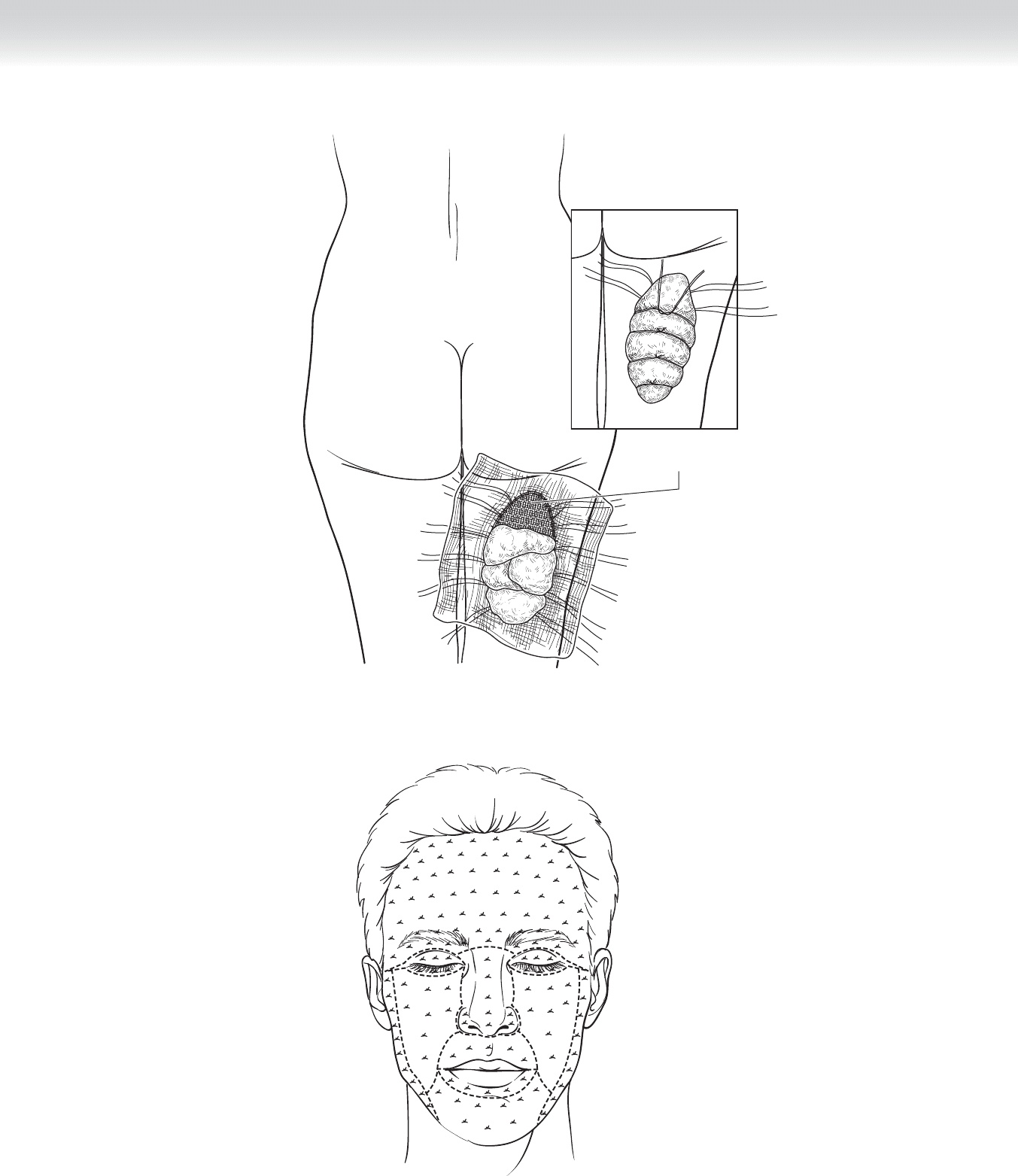
CHAPTER 103 • Skin Graft—Split Thickness and Full Thickness 1151
Nonadherent
gauze
FIGURE 103–6
FIGURE 103–7

1152 Section XV • Miscellaneous Procedures
ESCHAROTOMIES
STEP 1: SURGICAL ANATOMY
◆ See Figure 103-1 for cross-section of skin.
INDICATIONS
◆ In burn resuscitation, recognition of pathology related to increased tissue pressure is critical
to complete care and limiting secondary tissue injury. Skin, particularly skin burned to full
thickness, can become a constricting element to tissue swelling and cause a tourniquet-like
effect. Key to proper decompression is recognizing the potential, knowing the clinical signs
and symptoms, and when necessary, having the ability to test the pressure within the com-
partment. A circumferential burn that is on an extremity of full thickness is particularly at
risk for increased tissue pressure even if the percent of the burn is small, such as an isolated
burn to fi ngers and hand. Clinically, the signs of compartment syndrome are paresthesia,
pallor, pulselessness, paralysis, and pain. In the hand, in addition to the usual signs of ele-
vated compartment pressure outlined, delayed or absent capillary refi ll, resistance to passive
stretch, and a claw position at rest are clues to the need for decompression. The large burn
may require monitoring of the abdominal compartment pressures and consideration of the
fascial compartments in the extremities as possibly in need of decompression. Electrical
injury presents one of the most diffi cult challenges, because there maybe extensive damage
within deep muscular compartments with intact overlying skin. The surgical exploration,
fascial decompression, and removal of dead muscle should not be delayed, because the
resultant myoglobin in the serum is nephrotoxic.
STEP 2: PREOPERATIVE CONSIDERATIONS
◆ Escharotomies are usually completed safely at the bedside with sedation and electrocautery.
The possibility of signifi cant blood loss must be considered by the surgeon, and blood
should be available if needed. Positioning should be based on exposure of the area to be
decompressed, with arms supinated into anatomic position.
STEP 3: OPERATIVE STEPS
◆ Included are diagrams of properly placed incisions for decompressive escharotomies of vari-
ous body regions (Figure 103-8).
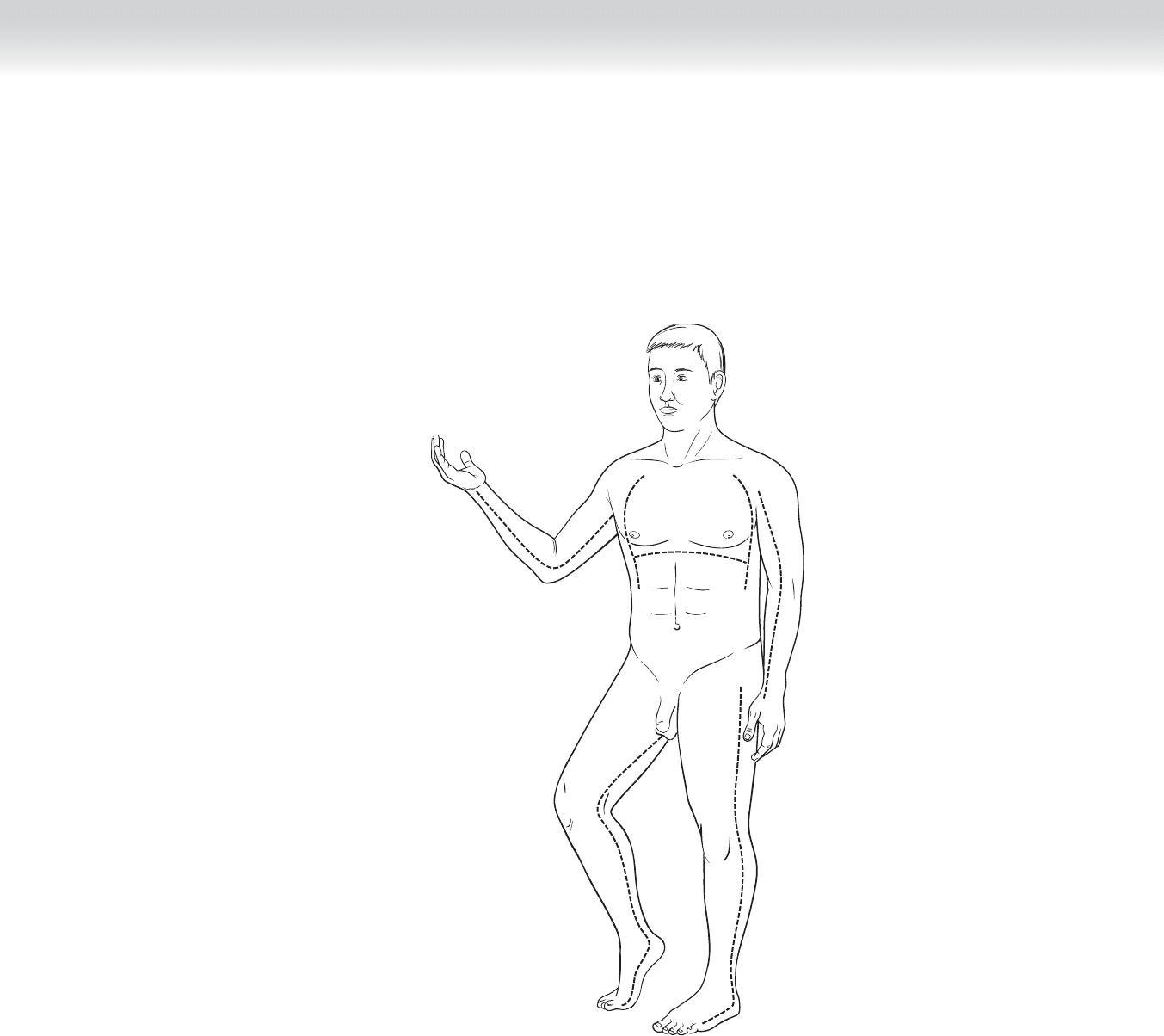
CHAPTER 103 • Skin Graft—Split Thickness and Full Thickness 1153
FIGURE 103–8
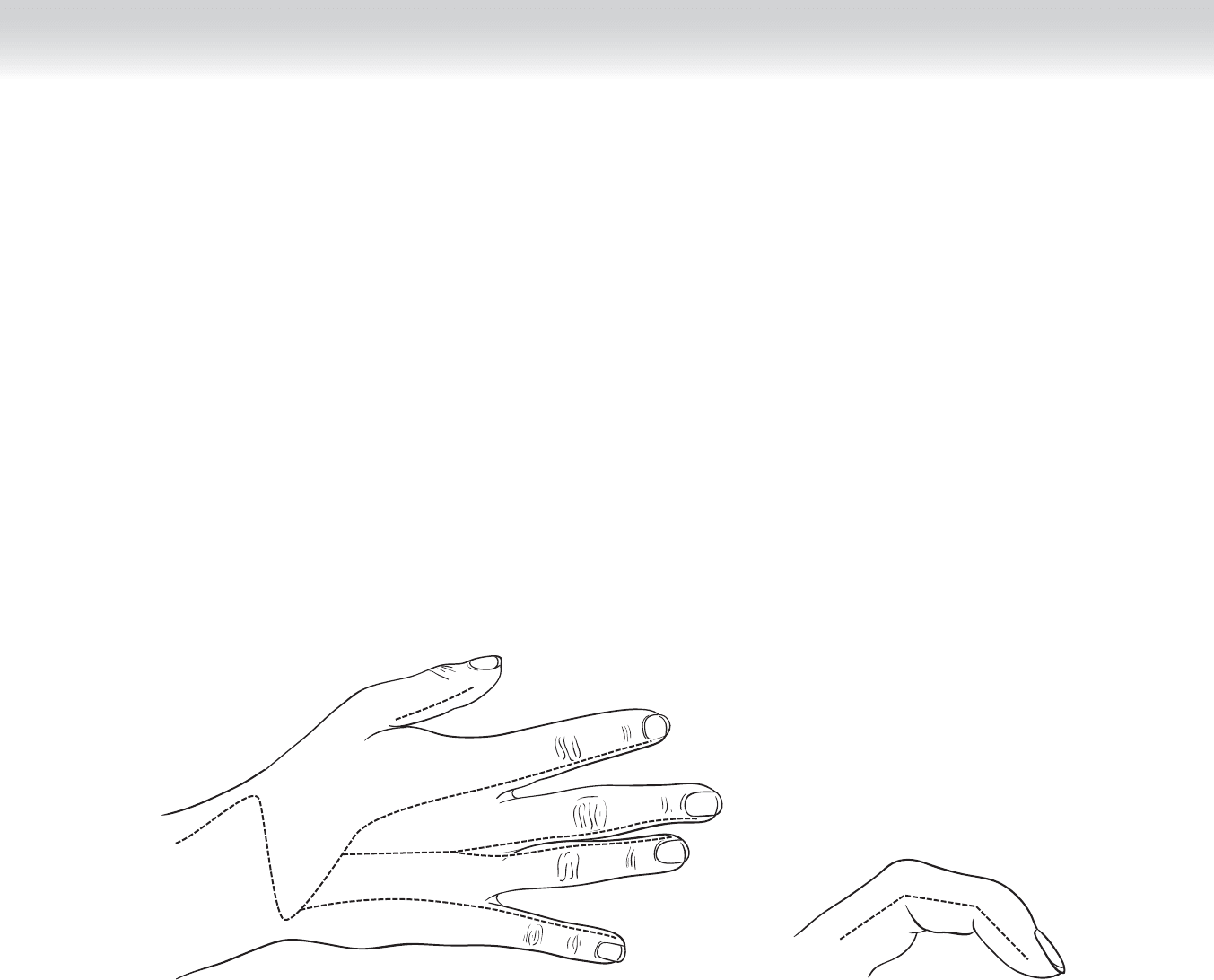
1154 Section XV • Miscellaneous Procedures
◆ To obtain an adequate release, the incisions should be mid-axial and completely through
the eschar. Avoid deep penetration of the subcutaneous tissue below. Deep penetration can
cause excessive bleeding and damage to underlying nerves and blood vessels. However, if
there is clinical suspicion of fascial compartment hypertension, an escharotomy can be
combined with a fasciotomy for diagnostic and therapeutic purposes. Escharotomy of the
upper extremity should begin on the radial side down to the wrist. Details of hand and fi n-
ger decompressions are represented in Figure 103-9.
◆ A special consideration is the circumferentially deeply burned thorax. Thoracic compart-
ment is manifest by diffi culty with ventilation and increased peak airway pressures. Recog-
nition and decompressive escharotomy can be life-saving. Incision lines for thoracic decom-
pression are outlined in Figure 103-8.
A
B
FIGURE 103–9
